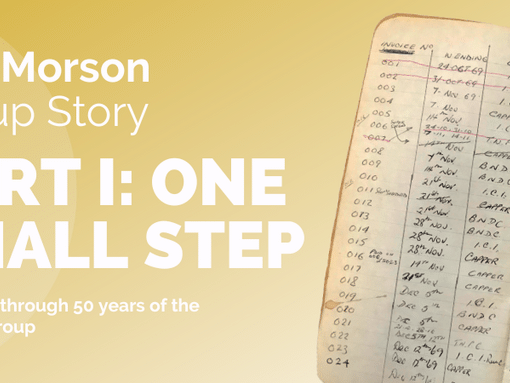
The IR35 Knowledge Series | Part 5 - Your Questions Answered
Over the course of our three IR35 forums with over 100 attendee’s, our keynote speakers answered a range of questions from our audience of end clients, most of whom we’re from large enterprises in the private sector. Their queries give real insight into the concerns and clarifications needed by professionals who will be directly affected by the changes IR35.
In part 5 of our IR35 Knowledge Series we bring you the answers from our experts at Weightmans LLP, Champion Contractors and Morson, to help you get more informed about the legislative changes to off payroll working, due to come into effect in April 2020.
The questions below are answered by IR35 specialists from employment law firm Weightmans LLP, contractor services company Champion Contractors and Morson Compliance Director, Phil Beardwood. For more information, download parts 1-5 of the IR35 Knowledge Series in our FREE IR35 eBook,visit our IR35 portalor contact us directly at IR35@morson.com.
Who is liable for determining IR35 status? The end client, the agency or the contractor?
How do I define whether a worker is inside or outside of IR35?
As a hiring manager, should I treat my permanent employees and contractors differently?
What happens if I want to offer a contractor a full-time position?
Does IR35 effect pension status? Must you auto enrol them in a pension scheme?
Q1. Who is liable for determining IR35 status? The end client, the agency or the contractor?
Mark Leach, Weightmans LLP- under the new plans, the responsibility for paying income tax and national insurance shift from the contractor to the hiring party and the agencies supplying them.
If you are engaging an agency as part of your supply chain, as of April 2020, the liability will sit with the fee payer of the worker i.e. the agency. However, the determination of status must be assessed by the end client.
Q2. What are the risks associated with IR35?
Phil Beardwood, Morson- Unfortunately, the HMRC tools and information required for clients to make an informed choice have been widely criticised (particularly the online CEST). Given the penalties for making an incorrect employment status determination, some clients have opted to make blanket ‘inside’ IR35 decisions.
As an end client, what is your appetite for risk? If you deem all your workers in scope and your competitor deems them out of scope, you’re going to lose your workforce. You won’t be able to win contracts because you won’t have the workforce to deliver them.
Q3. How do I define whether a worker is inside or outside of IR35?
Pili Fernandez-Mahoney, Weightmans LLP- You need to think about, how that person is being treated on a day to day basis. Do they receive the same benefits as a permanent employee? Benefits such as use of the company canteen or a parking space are other ‘personal circumstance’ factors which are going to feed into you determining whether your contractor is inside or outside of IR35.
It comes down to the fact that you must be treating your contract and permanent employee’s differently, because their employment status is different.
Q4. How do I analyse the scope of my contractor’s role?
Chris Bloor, Champion Contractors– Going through an Employment Status Indicator document helps you to get a picture in your mind of the role. You may not be able to answer the questions either way, but what Weightmans can do is then give you an indication of which way you should answer by giving examples ‘if you answered this way it would mean ‘x’, however if you we’re to answer this way, it would mean ‘y’. This will allow you to filter out your populations in a much clearer way.
Pili Fernandez-Mahoney, Weightmans LLP– The devil really is in the detail. When filling out determination reports it is important to be as detailed as possible. In our experience vague or short answers will arouse suspicion with HMRC. Even though you may know the answers, it is important to prove why a contractor works in a particular way or does a particular job, in order to avoid having to explain again further down the line. Merely putting ‘confidentiality’, ‘data protection’ or ‘security’ as a determination won’t mean anything to HMRC; these words mean nothing without some explanation behind them.
Q5. Who within a company should lead the IR35 legislation?
Phil Beardwood, Morson- When clients are wondering where the assessment of IR35 should sit, our advice is to form a stakeholder group and ensure that a representative from each relevant department is involved. They must engage with hiring managers, as this population will know what the contractor is doing on a day to day basis. The stakeholder group must educate the hiring managers in respect of IR35 as it is they who need to understand the difference in the way that contractors and permanent employees must operate.
Q6. As a hiring manager, should I treat my permanent employees and contractors differently?
Phil Beardwood, Morson- Yes, because they are different. The advantage of having a contingent workforce resourcing plan in place and procedures to follow is that hiring managers may not know whether the contractor is PAYE, Limited or Umbrella, and the contractor is therefore treated as an employee. Of course, you must treat every worker with respect and as part of the team, however you need to decide whether they should be sat in team meetings to discuss company pensions, for example.
IR35 presents an opportunity for the hiring managers to review their processes.
Q7. Once determined, is the IR35 status of a contractor set?
Chris Bloor, Champion Contractors– Not necessarily. Some things that may have determined a contractor out of scope can be easily resolved i.e. attending the staff Christmas party or using a company fuel card. If you take these things away from the individual, you can bring them easily back within scope.
Q8. What happens if I want to offer a contractor a full-time position?
Mark Leach, Weightmans LLP- You must be cautious. If the contractor was using a PSC before and on the 6th April 2020, they are now an employee, you need to decipher what the difference is in the relationship. HMRC have stipulated that they won’t actively go after those people, however if they see that there is enough value in going after that population then they will. It is not the employer’s issue because it will predate your relationship with the contractor, but it is something to consider.
Mark Leach, Weightmans LLP-If the contractor has moved from a temporary contract to a permanent position with the same employer, again it comes down to assessing the relationship you have with that contractor. If, while that person was a contractor, you did not have an employment relationship with them i.e. they regarded you as the client and vice versa, and then, when you recruited that person directly, the relationship changed, and they received all the benefits of permanent employment with your organisation, this is acceptable. If the relationship didn’t change then you probably did have disguised employment –we’re looking for a definite change in the nature of the relationship to ensure the temp to perm contract is in line with IR35.
Q10. Does IR35 effect pension status? Must you auto enrol them in a pension scheme?
Phil Beardwood, Morson- Where there is an agency involved in the supply chain i.e. the agency supplies a PSC worker to the end client and the end client determines that the worker can no longer work through the PSC (is in scope of IR35), then the agency would convert that worker into either PAYE or Umbrella. If the worker becomes PAYE, then the responsibility for auto enrollment sits with the agency –the agency would then need to charge the end client 2-3% more for that worker because of the cost associated with the transition. If the worker goes through an Umbrella company then the obligation sits with the Umbrella Company.
Pili Fernandez-Mahoney, Weightmans LLP– You must determine who is the employer of that particular worker. If your worker has been deemed in scope and you’re not going through an agency (instead you contract directly) then the obligations with regards to pensions would fall on you, the end client. If you contract through the PSC then the obligations would not fall on you. This is because, even though you’re making PAYE payments, you haven’t got a direct contractual link.
Phil Beardwood, Morson– So, you are the client, you have awarded a package of work for a fixed price to a subcontractor and the subcontractor is providing the workers on your site. The client in this instance is not obliged to make an IR35 determination because you are not the engager of that service. The subcontractor however will become the engager who will need to determine whether the workers fall inside or outside of scope if those workers are PSC’s.
Q12. How do I assess my supply chain with regards IR35 status?
Phil Beardwood, Morson– if you are using an agency you can determine this quite quickly. You can go to the agency and ask for a list of all their workers and whether they are PAYE, Umbrella or Limited company. You will have to do the same due diligence with the supply chain of your contractors. It’s not just looking at the contingent workers but it’s assessing whether you are engaging consultants on site on day rates rather than a fixed price package of work via contracting or sub-contracting companies. The essential step in this is to identify what your workforce looks like.
Pili Fernandez-Mahoney, Weightmans LLP– You must investigate the reasons why a contractor needs to use company equipment. Often this is due to security and confidentiality issues plus the nature of the job that they are doing. If we use MOD personnel as an example, they will be working on high security projects, obviously you wouldn’t want them to bring in their own laptops and plug into the network. Therefore, just because you supply laptops to your contractors doesn’t automatically symbolise that they are employees, but you do have to be able to justify why they have a company laptop. This is what we call a neutral factor, it doesn’t indicate employment status one way or the other, as long as you can prove a legitimate purpose for the provision of equipment.
Mark Leach, Weightmans LLP– It is important to remember that no single factor will determine employees from contractors. However, if you we’re able to show a distinction between a contractor and a permanent employee through whether they respectively use their own tools or not to do the same job, then this factor will certainly be considered when determining their IR35 status.
Pili Fernandez-Mahoney, Weightmans LLP– On this point, if you’re going to use tools as a determining factor, you must be able to prove to HMRC what tools we’re provided by the end client and which tools we’re provided by the contractor even years down the line. Logging which tools, we’re provided/owner supplied via an induction check list will provide clear evidence for HMRC and mitigate any risk.
















